|
|
![[elogo2]](/NewsGen/gif/elogo2.gif)
Resource Overview
![[page1]](/NewsGen/gif/page1.gif)
The Fourth McGill University Conference on Regulation of Eukaryotic DNA
Replication
St. Sauveur, Quebec, Canada October 1996.
The meeting will include plenary lecture sessions and poster sessions.
TOPICS:
* Eukaryotic Origins of DNA Replication
* Nuclear and DNA Structure in DNA Replication
* Modulation of Eukaryotic DNA Replication
Registration materials and information regarding abstract submission will be sent in
early 1996.
*********Abstract deadline date: June 27, 1996.************
![[tigr]](/NewsGen/gif/tigr.gif)
The TIGR Human cDNA Database (HCD) provides researchers at non-profit
institutions access to cDNA/EST sequence and related data from The Institute for Genomic
Research (TIGR) and Human Genome Sciences (HGS). HCD is designed to promote research using
these data while protecting intellectual property rights of their discoverers. In
addition, ESTs from world-wide EST projects have been incorporated into HCD and are added
to the database on a regular basis. The data are curated and maintained at The Institute
for Genomic Research where the system is also operated and managed.
An initial analysis of these data has been published (Initial assesment
of human gene diversity and expression patterns based upon 83 million nucleotides of cDNA sequence, Adams et al., Nature
(1995) 377(Suppl): 3-174). You may search the putative identifications of ESTs and
THCs from the Nature
Genome Directory.
![[BIC1]](/NewsGen/gif/BIC1.gif)
This Breast Cancer Information Core has been established
to facilitate the detection and characterization of breast cancer susceptibility genes. It
has been set up to be a repository for all mutations and polymorphisms in these genes.
More importantly, it is meant to provide help in the form of techniques, primers, and
support to those carrying out the lab work. By having access be through membership it is
hoped that it will be a place where mutations found yet not necessarily already published
can be accessible to others working in the field.
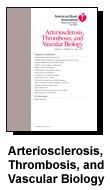 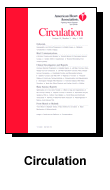 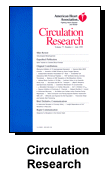 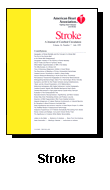 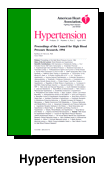
The American Heart Association, one of the world's premier health
organizations, is committed to reducing disability and death from cardiovascular diseases
and stroke.

owns his own WWW page (including TOC and abstracts). This
service is part of the FASEB information services. The
Federation of American Societies for Experimental Biologyhics is the largest coalition of
life sciences societies in the United States, and represents over 42,000 biomedical and
biological scientists.
November 8, 1995
To: Members of the Congressional Liaison Committee
From: Joint Steering Committee for Public Policy
Re: NIH Funding Letter-Immediate Action Needed
THE ISSUE
In response to the current budget impasse, the co-chairs of the Congressional Biomedical
Research Caucus circulated a "Dear Colleague" letter on the NIH budget
situation. The letter was circulated by Reps. George Gekas (R-PA), Bill Richardson (D-NM),
and Cliff Stearns (R-FL) and asks that the NIH be a top priority during budget
negotiations and be funded at the highest possible level for FY'96.
ACTION NEEDED
CLC members are asked to contact their Representatives now through December 1 to ask that
they sign the "Dear Colleague" letter in support of increased funding for the
NIH. Please call the Capitol switchboard (tel: 202/224-3121) to connect to your
Representative's office. Ask that the Congressman/woman contact Seth Johnson in
Congressman Gekas' office at 202/225-4315.
The following Members have already signed the "Dear Colleague" letter: Porter
(R-IL), Coyne (D-PA), Nethercutt (R-WA), Klug (R-WI), Fowler (R-FL), Clayton (D-NC),
Pallone (D-NJ), Bentsen (D-TX), Morella (R-MD), Cunningham (R-CA), Clayton (D-NC), Davis
(R-VA), Fox (R-PA), Olver (D-MA), Maloney (D-NY), Hall (D-OH), DeFazio (D-OR), Frank
(D-MA), Markey (D-MA), Dellums (D-CA), McDermott (D-WA), Meehan (D-MA), and Dingell
(D-MI).
Dear Colleague:
We are deeply concerned that the 5.7% FY'96 funding increase for the National Institutes
of Health (NIH) passed by the House may be permanently delayed by the application of an
across the board funding formula in any Continuing Resolution for Appropriations (CR).
Under the current operating CR until Nov. 13th, the NIH is now funded by a 5% decease in
funds from the FY'95 funding level.
The NIH is a program that all parties in the budget negotiations-- the Administration, the
House and Senate Appropriations Committees- -agreed was among the highest funding
priorities for FY'96. It is foreseeable that the NIH may continue to be funded at the
reduced level of 95% of last year's funds throughout FY'96. This would seriously
jeopardize our progress in biomedical research and produce a result that no one supported.
We are asking you to join us in the attached letter to President Clinton, Speaker
Gingrich, Chairman Livingston, Senate Majority Leader Dole, and Chairman Hatfield. Please
contact Seth Johnson at 225-4315 if you would like to sign on to the letter.
(Signed)
George Gekas, Bill Richardson, Cliff Stearns
Excerpts of the letter to be signed by your Member of Congress follow:
Dear____:
We are concerned about the current funding situation for the NIH. The NIH. The NIH is a
world leader in biomedical research. Its programs enjoy the broad bipartisan support of
both the Congress and the American public. The Administration, as well as the House and
Senate Appropriations Committees, all recommended FY'96 funding increases for the NIH, but
the current CR reduces NIH funding to 95% of the FY'95 funding level. This reduction is
unnecessary to achieve a balanced budget since both the House and Senate Appropriations
Committees recommended the NIH increase in the context of a seven-year balanced budget
plan.
If the current CR's funding reduction for the NIH were to be continued beyond the November
13th expiration date in any future budget agreements, there will be serious consequences
for the progress of biomedical research in the United States. The unintended consequences
of across-the-board funding formulas with no budget priority decisions threaten future
research efforts. Disease costs the nation billions every year in health care costs. As we
strive to achieve a balanced budget, we must adopt policies and funding priorities that
make the most of scarce federal dollars. Federal funding for biomedical research should be
a top priority because without new strategies to prevent, intervene and treat diseases,
health care costs will continue to spiral out of control.
For example, last year the nation spent $90 billion on the care of the Alzheimer's
patients. Significant progress through biomedical research to delay the most debilitating
aspects of a disease requiring around the clock nursing care would save billions of
Medicare and Medicaid dollars every year. An investment of one billion dollars in NIH
research wuld be a bargain to save approximately $40 billion in federal health care costs.
Currently, we fund only $300 millioon for NIH research on Alzheimer's disease. Adequate
funding for the NIH not only saves scarce federal health care dollars, but also provides
hope and solutions to the victims of diabetes, heart, stroke, and other chronic diseases.
We strongly urge you to fund the National Institutes of Health in any budget agreement at
the highest possible level for FY'96, consistent with the funding priorities set by the
House and Senate Appropriations Committees and the Clinton Administration.
Sincerely,
(signed Member of Congress)
* * *
For more information, contact Jim Bernstein at the ASCB at 301/530-7153, or Pete Farnham
at the ASBMB at 301/530-7147.
ASCB
ASBMB
BS
GSA
AAA
ASCB ANNUAL MEETING ADDRESSES SCIENCE, POLICY
National leaders in science, science policy, and Congress, including National Cancer
Institute Director Richard Klausner, NIH Director Harold Varmus, fellow Nobel Laureate
Paul Berg, Chiron Corporation CEO Edward Penhoet, and Congressman John Porter (R-IL) will
be featured at the American Society for Cell Biology Annual Meeting. This 35th ASCB Annual
Meeting will be held at the Washington, DC Convention Center from December 9-13. Some of
the issues of special interest to members of the scientific community include:
Educating the Public: Ideas for Scientists as Advocates, will be moderated by Robert
Goldman of Northwestern University on Saturday, December 9 from 2:00-4:00 PM. Panelists
will include Washington Post science writer Boyce Rensberger, Harold Silverman of
Interscience Communications Ltd, Ellen Stoval of the National Coalition for Cancer
Survivorship, and Congressional Representatives. The seminar will focus on how scientists
can more effectively address some common misperceptions the public has about medicine, and
how they might become more effective advocates to the press and public at-large.
Richard Klausner, NCI Director, will give the Policy Keynote Address on Saturday, December
9 at 6:00 PM. Klausner will discuss The New NCI: Opportunities and Responsibilities. Eric
Kandel of Columbia College of Physicians and Surgeons will give the Science Keynote on
Genes, Synapses, and the Cell-Term Memory.
The E.B. Wilson Medal Presentation and Lecture by Bruce Nicklas of Duke University will
take place on Sunday, December 10, at 6:15 PM. Nicklas' lecture is Needling the
Chromosomes in Mitosis.
The E.E. Just Award Presentation and Lecture by James R. Gavin III of the Howard Hughes
Medical Institute will be held on Sunday, December 10 at 2:00 PM. Gavin will discuss
Cellular Calcium Dysregulation in Insulin-resistant Diabetes Mellitus: Role in Disease
Pathophysiology.
ASCB President Ursula Goodenough of Washington University will address local high school
students on Sunday, December 10 from 12:30-4:00 PM. Students and members of the press will
have the opportunity to ask questions following the presentation entitled Why do Cells
Have Sex, and How Does Sex Evolve?
Harold Varmus, NIH Director, will be the featured speaker at the first ASCB College
Student Symposium on Sunday, December 10 from 2:00-5:30 PM. Following the presentation,
students will be invited to ask questions as well as to listen to selected graduate
students discuss their career options and decisions.
Congressman John Porter (R-IL) will receive the ASCB Public Service Award and address the
ASCB Membership on Sunday, December 10 from 7:30-8:30 PM. Rep. Porter is Chairman of the
House Labor, Health & Human Services Appropriations Subcommittee and one of the NIH's
strongest Congressional supporters.
Paul Berg of Stanford University School of Medicine will present The Scientific
Enterprise: Entering the Next Millennium, on Monday, December 11, from 1:00-2:30 PM. Berg
will discuss career options for graduate students and the future of the job market in the
biological sciences.
The Congressional Liaison Committee will meet on Tuesday, December 12, from 9:30-10:30 AM.
ASCB Congressional Education Liaison Peter Kyros, and Tom Pollard of Johns Hopkins
University will discuss the ASCB's role in political advocacy. Members of Congress have
been invited.
The Second Annual Practice of Science Session on Research in a New World: Practicing
Science in an Era of Constrained Resources will be held on Tuesday, December 12 from 1:30-
3:00 PM. Edward Penhoet, CEO & President of Chiron Corporation, will provide an
industry perspective, and ASCB past-President J. Richard McIntosh of the University of
Colorado will provide an academic perspective. Keith Yamamoto of the University of
California, San Francisco will moderate the session.
Leland Hartwell is recipient of the Fourteenth Keith R. Porter Award and will give his
award presentation on Tuesday, December 12 at 7:30 PM. Hartwell will speak on The Cell
Cycle.
For general information, contact ASCB Public Affairs Director Jim Bernstein at
301/530-7153. To register for the Annual Meeting by e-mail, write jbernste@ascb.faseb.org.
Provide your name, business affiliation/address, phone, fax. Write "Press
Registrant" in your reply. A confirmation will be mailedto you.
![[natureho]](/NewsGen/gif/natureho.gif)
Since October 19th, 1995 Nature maintains a WWW site
including What's new in Nature, Catalogue of Nature's Journals and Job descriptions.
![[cshlpres]](/NewsGen/gif/cshlpres.gif)
a new journal from CSHL Press including an online
supplement. The journal focuses on genome studies in all species, including genetic and
physical mapping, DNA sequencing, gene discovery, informatics, statistical and
mathematical methods and genome structure and function, as well as technological
innovations and applications. New data in these areas are published as research papers,
review articles, short reports, and summaries of physical mapping and large-scale
sequencing projects.
![[rmc-logo]](/NewsGen/gif/rmc-logo.gif)
The Resource for Molecular Cytogenetics at Lawrence
Berkeley National Laboratory and at the University of California, San Francisco, funded by
the Department of Energy, has been created to facilitate the application of molecular
cytogenetics in clinical and biological studies. Work is being pursued in three areas:
Development and application of improved hybridizaton technology, selection of probes
optimized for the use in situ hybridization (FISH), and development of digital imaging
microscopy.
Probe Mapping
Data
Images
![[LISTICON]](/NewsGen/gif/LISTICON.gif)
An international listing of ongoing clinical trials
actively recruiting patients. Use this listing to search for clinical trials by
therapeutic area and geographic region.
![[MRAALOGO]](/NewsGen/gif/MRAALOGO.gif)
AIDS. Arthritis. Cancer. Diabetes. Heart Disease. Herpes.
Fight back by supporting medical research, and help discover the prevention and cure for
these and other diseases.

is providing a public service to qualified research organizations who
are conducting or are planning to conduct Clinical Trials which are IRB or FDA approved.
Referring physicians or patients considering enrolling into a Clinical Trials Program
should contact the designated individual(s) listed in the Informational Announcement.
The tables of contents and abstracts for Cell, Immunity, and Neuron are
now available. To facilitate communication with authors, Cell Press has attached to each
article the corresponding author's telephone and fax numbers and, where available, email
address.
![[ucsd]](/NewsGen/gif/ucsd.jpg)
is a database offered as a public service to help locate laboratories
performing various biochemical genetics tests.
![[page1]](/NewsGen/gif/page1.gif)
is a new Genetic Counseling Students' Network of the Department of
Medical and Molecular Genetics at Indiana University (54 subscribers / October 9th '95).
You can join this group by sending the message "sub PZANDQZ your name"
to listserv@indycms.iupui.edu
![[rattany]](/NewsGen/gif/rattany.gif)
is is a database covering genes physically mapped to chromosomes in the
laboratory rat and kept by the Department of Genetics in Gothenburg. The service contains
General information,
Rat Genetic Nomenclature,
Rat locus list,
Literature
references sorted by rat gene symbol.
![[dna2b]](/NewsGen/gif/dna2b.gif)
is maintained by the Human
Genome Management Information System (HGMIS) for the U.S. Department of Energy Human Genome Program.. HGMIS
is charged with
- helping to communicate genome-related matters and research to contractor , grantees, and
other publications;
- serving as a clearinghouse for information on the U.S. genome project; and
- reducing duplication of research efforts by providing a forum for information exchange
among Huma
Genome Project investigators worldwide.
![[page1]](/NewsGen/gif/page1.gif) HUM-MOLGEN -
Meetings HUM-MOLGEN -
Meetings
of the
![[logo6]](/NewsGen/gif/logo6.gif)
is an analytical database for constructing fully integrated genetic and physical maps.
The ldb program generates an integrated map (known as the summary map) from partial maps
of physical, genetic, regional, somatic hybrid, mouse homology and cytogenetic data.
![[crowns-i]](/NewsGen/gif/crowns-i.gif)
by William H. Heidcamp / Gustavus Adolphus College, Saint Peter, Minnesota, USA is
now online: Registration (E-mail address).
![[mini-log]](/NewsGen/gif/mini-log.gif)
is a peer-reviewed Web journal dedicated to the dissemination of research results in
molecular and cell biology and genetics of the visual system (ocular and cortical).
![[gdb-logo]](/NewsGen/gif/gdb-logo.gif)
Australia - ANGIS, Australia - WEHI, France - INFOBIOGEN, Germany - DKFZ, Israel - Weizmann Institute,
Japan - JICST, The Netherlands - CAOS/CAMM Center,
United Kingdom - HGMP Resource
Centre.
![[layouts]](/NewsGen/gif/layouts.gif)
is a database of hypertext, Internet linked clinical medicine resources. The goal of
the Medical Matrix Project is to enhance patient care with global clinical medicine
resources delivered to the point of care. This new version categorizes resources by
diseases, specialties, interest areas, quick reference guides, comparison databases-
images, procedures, techniques, learning modules, and interactive forums. More than 1000
new entries have been added since the January 1995 version. Medical Matrix offers
annotations of resources, spotlights the more developed programs, and gives news and
backround on Internet medical resource development.
![[layouts]](/NewsGen/gif/layouts.gif)
is a prototype database of gene families in the human and mouse that contains both
community contributed information and hypertext links to various biological databases ( PAX , Cytochrome P450 , Insulin including the Insulin-like growth factors , Amyloid Precursor Protein (APP, APPLP1,
APPLP2), DNA repair proteins , ABC proteins ).
![[itologo]](/NewsGen/gif/itologo.gif)
will act as a focus for providing access to the wealth of articles in Immunology Today Online,
as well as providing a stepping stone to other Web sites of note for those with an
interest in immunology.
![[dnaweb]](/NewsGen/gif/dnaweb.gif)
is designed to give an introduction to DNA vaccines to the many immunologists and
specialists in infectious diseases who are still somewhat unaware of this evolving field.
On the site one will find protocols (that actually make the experiments work), control
plasmids (given out freely) to validate one's own DNA-based immunizing technique,
references (linked to their Medline abstract), press releases, and links to other relevant
sites concerning immunology, infectious diseases and vaccines.
![[cshlpres]](/NewsGen/gif/cshlpres.gif)
introduces BIOSUPPLYNET-An online directory of biotech research products
and services. This new WWW site offers free searching in the CSH Lab Manual Source Book
database of 15,000 laboratory products and 1,400 suppliers. BIOSUPPLYNET features
"Interactive Product Listings" (IPLs), which provide users with instant access
to details on many of the products contained within its extensive database.
BIOSUPPLYNET is updated weekly and provides:
1.) Information on new products and special offers
2.) Access to 15,000 laboratory product listings from over 1,400 suppliers
3.) An opportunity for users to share expertise through product user groups
4.) Immediate access to suppliers via email for technical queries and ordering information
5.) Links to more than 100 biology-relevant Web servers.
BSN is accessible at: http://www.biosupplynet.com/bsn/
We would appreciate your evaluation of our site.
Sincerely
Joan Boyce
CSHL Press
|
|

